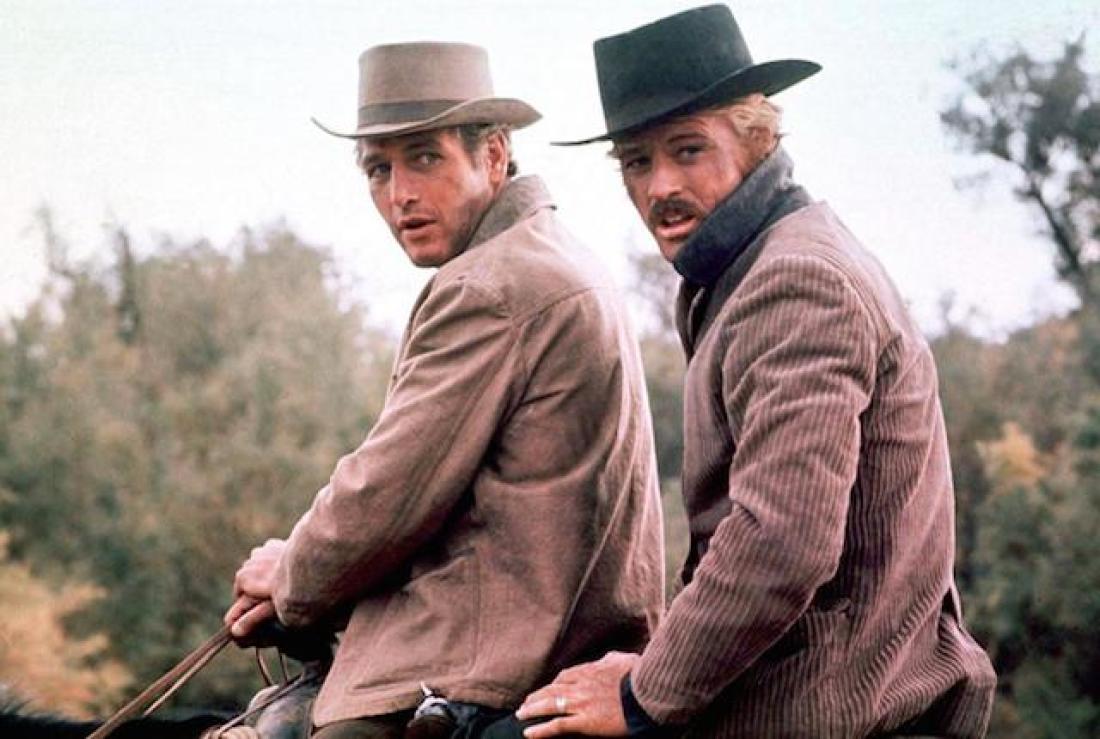
Butch Cassidy and the Sundance Kid Review
By: Luke Parker, Columnist
Featured image courtesy of mentalfloss.com
Butch does the thinking and Sundance does the shooting. It’s a dynamite pairing; they are the perfect outlaws and the most likable bandits ever put on screen. Starting off with the words “most of what follows is true,” George Roy Hill’s “Butch Cassidy and the Sundance Kid” is based on real-life events in the late 1800s, but the manner in which it unfolds is so whimsical, the better part of its two-hour runtime elicits a smile. It is pure entertainment.
What is perhaps most accurate about the film is its reflection of the year in which it was made. There will never be another time other than the late 60s where it would be appropriate to halt the action for a sunrise bicycle ride set to the tune of B.J. Thomas’ “Raindrops Keep Fallin’ on My Head.” Mind you, it may not have been appropriate back then, either, but it had to have been at least a bit more so; one of the film’s four Oscar wins was for that song.
This scene is only one of many instances which presents Butch Cassidy as a western in near denial (a lot of fun can be had, for instance, in watching the heroes run away from the danger); it is also one of the two which does not work. The other comes later in the film, as Butch (Paul Newman), Sundance (Robert Redford), and Sundance’s girl, Etta (Katharine Ross) are shown fleeing the country through a minutes-long collage of penciled-in photos. Just shy of its 50th anniversary, these two sequences are remarkably the only things that don’t hold up.
Butch and the Sundance Kid are the chief pair of The Hole in the Wall Gang, amusingly introduced by a period-piece newsreel. They rob trains the nice way. Butch tries tip-toeing around killing, but when he can’t, that’s when Sundance, whose stare alone establishes him as the fastest gun in the West, steps in.
Just as they work brilliantly together, so do the actors who portray them. Along for the ride and fresh off of The Graduate, Katherine Ross, as the woman who takes her place alongside (and in between) Butch and Sundance, is thrilling in her own way. The scenes in which she teaches the boys how to rob in Spanish are both sweet and droll.
No, the flaw in Butch and Sundance’s operation is that they don’t know when to quit; once they take it a bit too far in America and manage to escape from the all-star posse sent to kill them, they flee to Bolivia, only to get into even more trouble. Butch is supposed to do the thinking, but as they face their final fate, Sundance makes one last request: “I don’t ever want to hear another one of your ideas.”
Unlike “Raindrops,” the film’s three other Oscars – score, cinematography, and screenplay – still feel earned. The locations, from mammoth canyons to vast plains, are as gorgeous as the three stars who roam across them, and the screenplay, which sees hold ups lost in translation (literally) and a banker willing to get blown up (twice) to protect his boss’ loot, is a riot. When you throw on top of that the amorous wit of Newman and the perfect foil in Redford, you have what may be the most likable western ever made.

